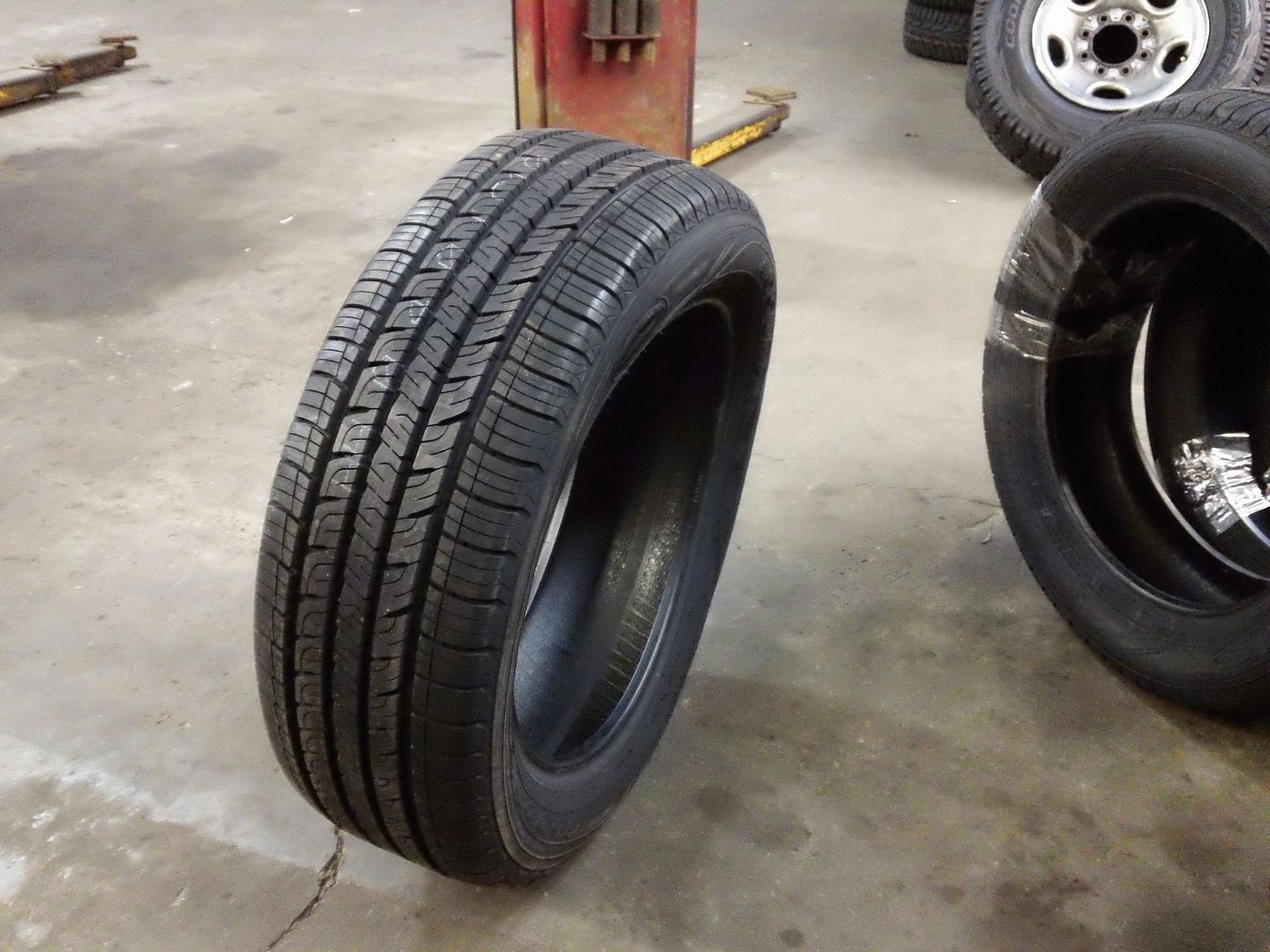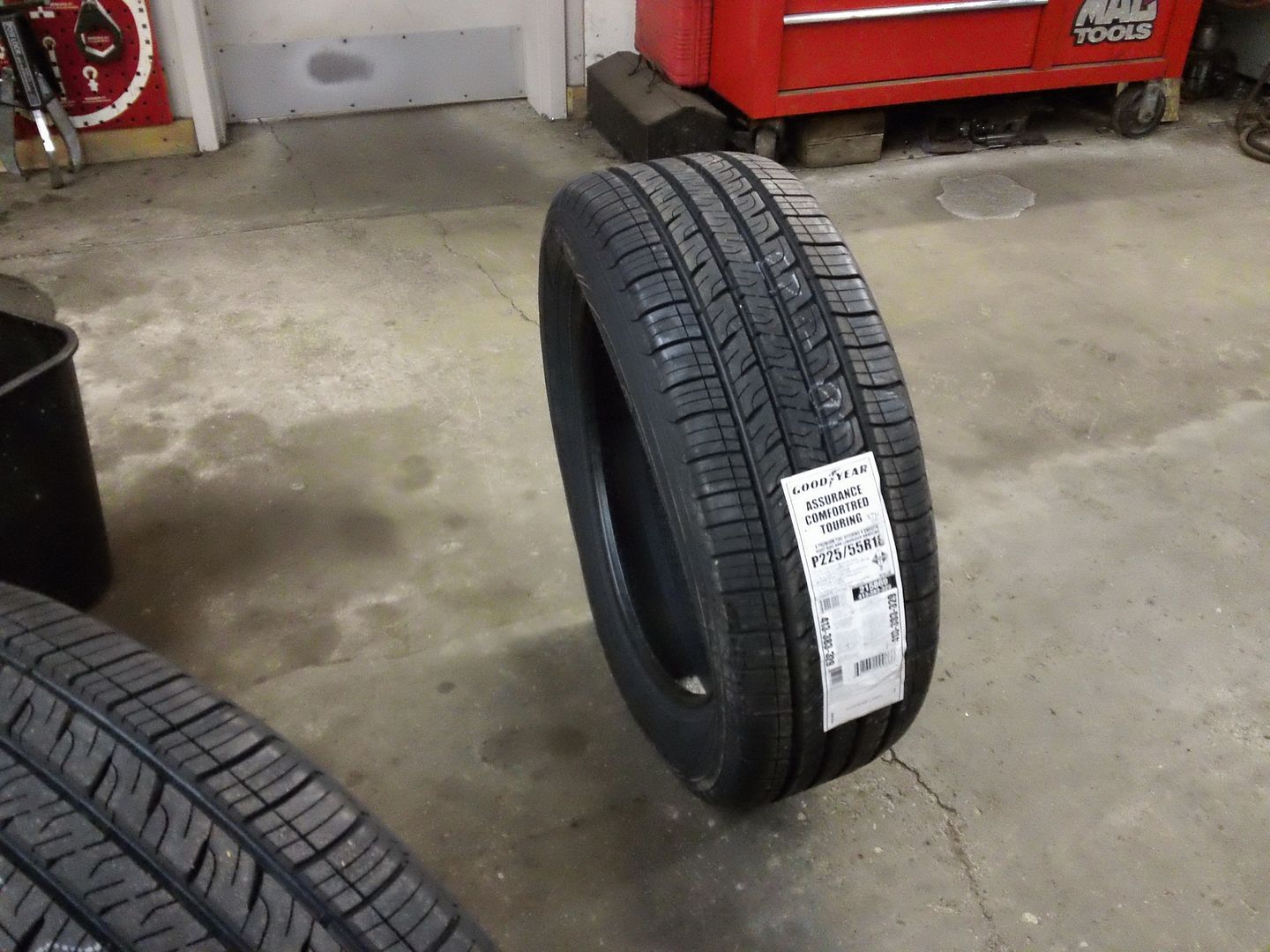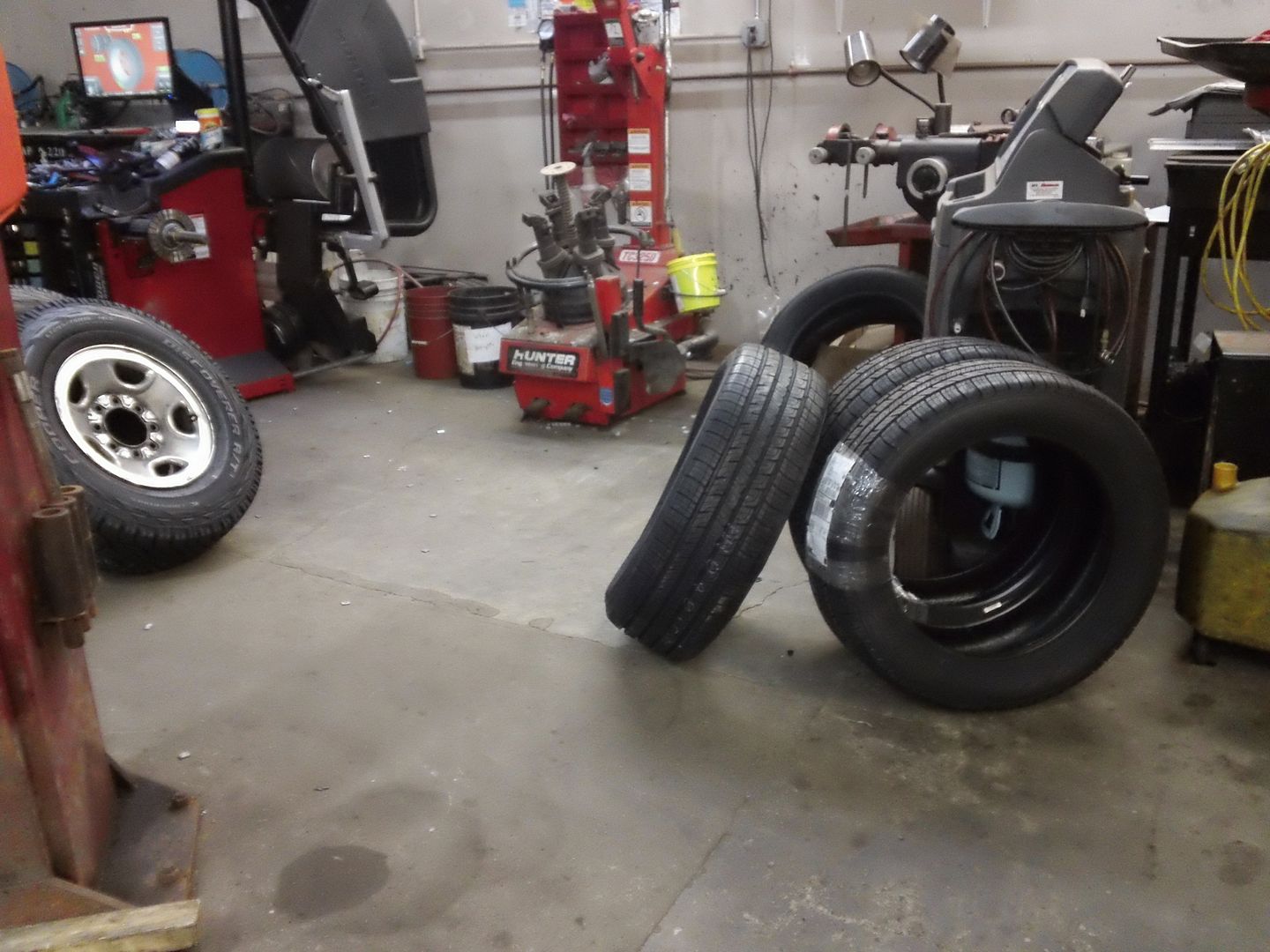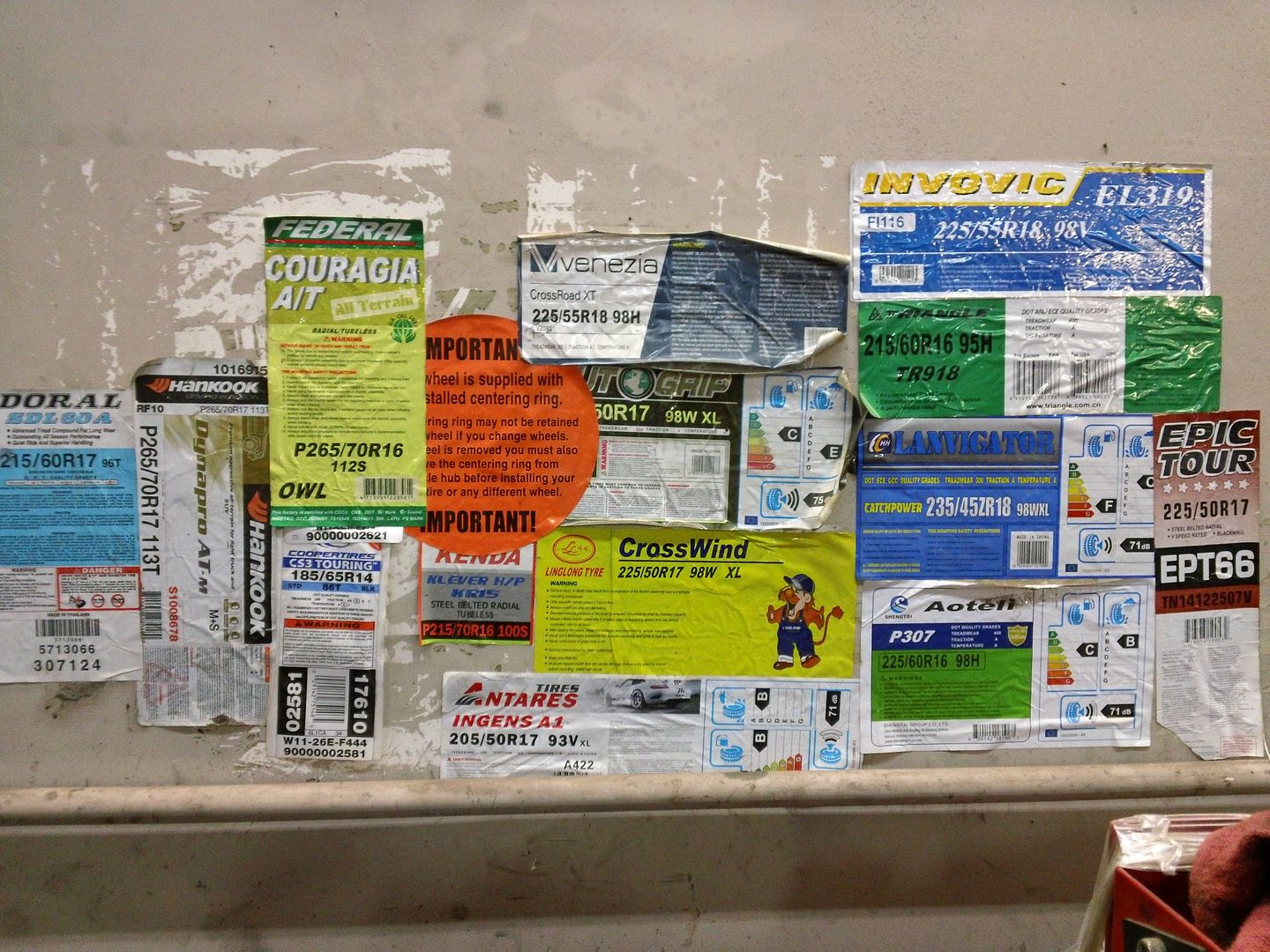Forum Replies Created
-
AuthorReplies
-
First big job I ever did was was a water pump and AC compressor/condenser delete 16 years ago on my Jetta. It went off without a hitch and I was so proud of myself until a few days later when I was sitting in a drive-thru for too long in the summer heat. About the time I got to the window, I noticed a little steam coming out the edge of the hood. I thought “as soon as I get my food, I’m pulling right over in that parking spot to investigate that”.
A few moments later, the heater core blew open and sprayed hot coolant on my leg and leaking half into the car and the rest outside on the ground. It made a huge cloud of steam that fogged over all the drive-thru windows. I shut it off, squeezed out at the pickup window, and pushed the car into a parking spot. Turns out I had forgotten to plug the radiator fan back in.
Technically I’ve had way more actual embarrassment at work however, because anything big that gets botched at work all the other techs know about (and the boss).
I usually replace the rear crank seal when doing a clutch job on old cars. I’ve never had one come back leaking yet. However, I would never install a auto parts store seal in a place that costs so much labor to access. I demand dealer seals, or in certain special cases, mail ordered high quality aftermarket seals (Febi, Victor-Reinz, ERTL, etc).
Thread-locking compound is generally not used on clutch cover bolts, unless your specific application requires it. It’s common to use it on flywheel bolts, even when it’s not specified.
Machine shop flywheel resurfacing normally costs around $80. A mechanic that does regular business may get it for $50, and a high retail/counter price would be $100.
When I don’t have that done, I a stiff wire cup brush on a drill to scratch up the surface without altering it’s flatness. You can make it wavy (bad) by being careless with sanding discs and the like that will actually remove material. Keep in mind that this applies to flywheels that have not been overheated/distorted. If it’s distorted (from allowing excessive slippage to overheat it), it really should be machined. I’ve never actually assembled a clutch with a distorted flywheels so I can’t tell you what will happen. I just don’t do it.
[quote=”MBDiagMan” post=166909]… remove the ground cable first when disconnecting the battery and connect it last when reconnecting the battery. The reasoning is that you then will not cause an arc if the wrench hits something while on the positive terminal…[/quote]
This is what I do and why, but I also think nobody here is wrong.
The only thing you can do in a shop is tell them ahead of time that you know this will be a problem and you’re alright with any associated expenses. The problem is that is so uncommon for a customer to understand and acknowledge it that it’s unlikely that they will actually believe you. I know that sounds ridiculous and it is, but that’s just the reality of it.
Being that you will be doing oil changes yourself, you can buy the correct replacement fasteners and keep the threads lubricated with grease. The bolts typically thread into speed nuts. When they seize, the speed nuts tear the heck out of the plastic that they’re clipped onto, which you may find when you go under there with time to look around. Sometimes there’s no place left to install a new speed nut if it got too damaged.
I don’t think it would make you a shitty customer to ask for replacement fasteners, but understand that Honda will not pay for them. It’s either you or the dealer. I do like Firnz’s idea of taking it back with the attitude of “lets figure out why it happened”. With the car in the shop with a repair order, there may be a way for them to get Honda warranty to pay. Like DaFirnz said, his shop covered the cost of dealing with belly pans, mine ‘sort of’ does, every dealer handles it their own way.
The manufacturer’s attitude on splash shields is basically “it was caused by outside influence, so it’s not our problem”. Whether the customer drives it over something and breaks it or a tech screws it up and leaves it half-assed after service, it’s not warranty. It never is.
Armed with this information, I wish you the best of luck in dealing with it. Feel free to ask any further questions.
As usual, you don’t say where in the world market you’re car from or what your car specifically is (model year matters, saying ‘brand new’ doesn’t mean anything because it’s an expression).
I’m going to start by saying that changing oil every 8000 miles is neglect. It’s safe to say that you’re splash shield has to be removed for every oil change. Being a dealer tech in the northern US, where everything rusts, it’s common that the small fasteners that hold that shield become seized by your mileage in any area that roads are salted during the winter. That shield may not have seized fasteners if it were in for oil changes frequently enough. I know it shouldn’t be that way, but it is. Blame the manufacturer for the metal they choose to make the fasteners out of, the dealer has no control at all with that.
They have 2 ‘good’ options when that happens:
1) Come out to the waiting room and tell you your oil change has doubled in price so they can properly secure your neglected splash shield
2)The tech just gets the whole thing out of there (like you did) and says nothing because it’s likely that you (the customer) will never know the difference.
What happened to you was the 3rd, less good option:
3) nervous tech half-assed attached neglected splash shield, hoping it would be fine but glad to to not have a random shield in their garbage can so a boss can see it walking by and yell at them for doing that. Ironically, the tech coming up and saying that the shield needs parts and labor time to attach properly is nothing any service advisor ever wants to hear. That kind of thing is never covered by any manufacturer warranty and customers get furious when asked to pay for it.
Bottom line is that when it comes to shields, it’s as bad for us as it is for you. Be mad at the manufacturers, we are just the intermediary between you and them.
Thanks for the thank you’s fellas, I appreciate it. I just call it how it is.
451Mopar, I need to respectfully disagree with you on this one. I do completely agree that lying to customers to build trust is not the answer it should be, but it is indeed the right answer. It’s like being right about something, but for the wrong reason.
To put it as simple as possible:
Customers bring me the car to fix because they are not capable/equipped/skilled enough to deal with it themselves. It’s no different than a plumber/electrician/mason/contractor, in that the customer is paying somebody to problem-solve their very specific situation. As is normal, the car has a technical problem that took me years of training to fully “get” or understand. Maybe a rookie can figure it out, but they don’t really know why they’re right. In comes me, who does, trying to explain that to a customer. They don’t know, and they don’t understand what I tell them because of that.
If I tell them I want their money and they don’t understand why, they become hostile. It’s as simple as that, and only the most mature adults are able to get past the fact that it’s ok for them not to know everything. I can certainly understand the lack of trust, but customers have no choice. That’s why they’re paying for the service.
In the end, making customers feel intimidated/ignorant is not the way to build trust with them. Making sure that their car is fixed properly and that they think they know why is what does build trust. In the end, after all the BS conversations, fixing their concern is what makes them happy. The part of the conversation that this thread is covering is the part the shop convinces them to allow their car to be fixed.
Service writers exist only to prevent the customer from preventing me from fixing their car.
Also, you have a valid point about the cameras. I’d figure the normal customer reaction would be “It’s not my fault the guy doesn’t know what he’s doing”, but it could still be very helpful.
[quote=”gmule” post=167754]Is that a DSP 9600 in the back ground?[/quote]
GSP9700 Road Force Touch.
If you make the throttle opening larger without precisely fitting a larger throttle plate, the throttle will no longer seal when closed. This will cause a high idle which will also cause a check engine light when the computer determines it’s no longer possible for it to regulate idle speed to the specified range. Looking for a performance gain by upgrading the throttle (whether properly or improperly) on a otherwise stock engine is also not going to turn out to be a useful effort.
Everything said in the video is accurate, although it maybe leaves a few things out. Before I was a tech, I was a service manager/writer for a used car dealership. That job was absolute hell largely due to what this guy is talking about, but there was an additional problem in being honest with customers.
What happens is that I honestly explain what is wrong and what repair is needed, in a technical way, the customer usually does not understand what they are being told. Because they don’t understand, they feel ignorant, then realize that they have no way of knowing if you’re telling them BS or not, then they become defensive/hostile, then the argument starts. This happened so many times, and I couldn’t deal with it. The concept of customers getting mad that they don’t understand repairs on their car, when they are at the shop in the first place because they aren’t qualified to deal with the car, is not something I can deal with face to face in a professional, courteous manner.
Machines don’t lie, and can’t be BS’d, which is why I like working with them. Humans are the opposite of that, which Is why I don’t like dealing with them. There is an artform to BS’ing customers regarding an honest repair, dumbing the reality of that repair down so much that they ‘think’ that they understand what happened. That is not my kind of art because I don’t respect a customer who needs to pay another to perform a task but can’t be alright with the fact that they are doing so because they are ignorant/unskilled in that area.
One great answer I’ve figured out is for the customers who think a 15 minute repair of some problem that rendered their only car useless isn’t worth paying for, simply because it didn’t take a long time.
“You’re not paying for what I did, it’s that I knew what to do.”
Another thing along those lines is that I no longer tell somebody that “it was a blown fuse”, because the response is something along the lines of “oh that’s all?, I could have done that”. Then they feel that’s not worth paying for, even though they chose not to investigate the issue themselves but to immediately put it in the hands of a professional (someone who, by definition, gets paid for what they do). Because of this attitude of it being ok to be a moron for free, blown fuses have become open circuits. I found and repaired a open circuit. There you go.
You do not need to put anything other than the intended shims on the backs of the pads. Some people apply grease or silicone, presumably to prevent noise. I’ve been installing quality shimmed pads for many years, greasing only the ears of the pad, and have no issues with comeback noise. This also includes all of my own cars and the family/friend cars I’m responsible for.
The only time I’ve ever put silicone between a pad a caliper was for a guy who had crappy pads with loose-fitting shims installed somewhere else, but had to have them completely quiet all the time. He refused to buy any parts again. He just wanted the brake job done right, but with out changing any brake parts. The silicone worked so I’m not going to say those kinds of shoddy practices are ‘wrong’, but you shouldn’t need to do that IMO.
In your case, if you’re installing yourself, I’d recommend you grease only the ears of the pad where it interacts with the bracket like is ideal. If it turns out that you get squealing you don’t want, taking the calipers off to put something on the back of the pads is less than half the work/time of doing the original brake job.
I’m a tire Junkie, I think. I can look at a tread design and know what the tire is meant to be used for and how well it will fulfill it’s intended purpose.
On my performance car, I love some low treadwear numbers. On my car now is Toyo Proxes R1R with 140, which are the best tires I’ve tried so far. Now they make R888’s in my size with a 100 treadwear rating. Those tire will probably give me 2000-3000 miles of bliss when I install them later this summer.
But I’m not just a Tire Junkie who’s obsessed with high grip tires, I’m also a tire junkie who installs lots of junk tires. I even have a wall of shame:



The Shop’s wall of shame:

You have a car with a 25 year old convertible top. That’s what sticks out to me, an expensive failure point. How often you operate and how well you take care of your convertible top was not specified, but matters in this discussion. I can understand how the Celica would be more fun to drive, but I have to say from experience that a 6th Gen Accord auto can also fun. I am a very spirited driver, and I’m happy daily driving mine the last few years. Aside from keeping a 200k car tight, I’ve also done a lot of tranny work on it as well and it’s really a good car. Because the transmission on the Honda is more like a conventional constant mesh stick shift than a conventional automatic, it can be driven in a spirited manor if you know how to use it.
Engine clattering that is very load-sensitive and sounds like detonation or pinging… As long as you’re sure it’s not pinging, it would possibly be a bottom end noise. Excessive carbon buildup in the combustion chambers can also raise compression ratio and reduce combustion efficiency at the same time, and cause pinging that didn’t used to happen. College man was hinting at the fact that excessive coolant temp also means hotter combustion chambers (promotes detonation), but you said that was fine. Just throwing ideas out there.
Here is the sound of rod knock (worn bearings due to lack of lubrication), piston “slap” is sounds a little different but similar.
Skip to 1:20 :I hope you’re engine doesn’t sound like that. Mitsubishi engines are very reliable and usually require extreme abuse to damage them mechanically. Do you have any codes, like maybe a lean code? With a Pajero outside the US market, I don’t know the specifics of your OBD or emissions systems.
Take off the driver’s kick panel and underneath it there is a clump of joint connectors. They are where the dash and rear body harnesses connect to the front end and engine harnesses. The connectors get wet on older Mitsubishis, especially if lots of snow is tracked in or they are left to sit in wet conditions for a months/years, and the pins of all those white connectors will have green corrosion all in them. I’ve seen almost every problem you’re describing stem from an issue there. I’ve never seen it affect the engine performance though and it may be a separate issue.
The other more universal thing is the battery ground cable which goes from battery negative to the body and then over to the engine/trans assy and connects all 3 together. Any problem there may cause any and all of your problems, regardless of what kind of car it is.
I really agree with your assessment of this kind of situation. Almost all customer cars are unloved and I always feel like I do better work on them than the owner deserves. Being at a Mitsubishi dealer, the area where this shows is with the Evos (Lancer Evolution). We are a family-run dealership where every male family member owns a Evo and we get people driving Evos from other states past other Mitsubishi dealers to come to us. These are cars that 80% of them are modified and most of those modifications are not done at in my shop.
You really see the difference in love between these cars. All of them are driven very hard and have money hemorraged into them, but you can really see which ones are actually loved vs being driven hard and put away wet. It’s a real thing and a great ETCG1 subject, Eric.
-
AuthorReplies
 Our Address
Our Address 



